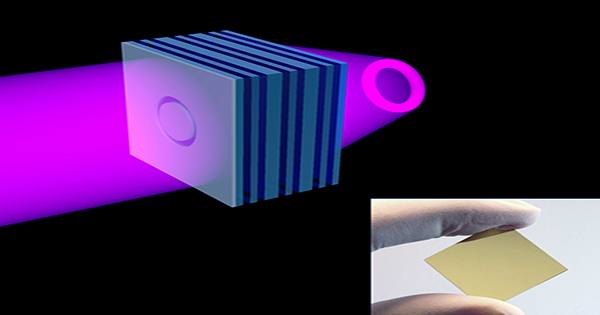Physicists have achieved an unprecedented time reversal of optical waves. Sadly (or thankfully, depending on your perspective), it has nothing to do with time travel, but none of this can prove to be very effective. The intervention can complicate simple waves at once as they spread. It involves collecting all those complexities over time and reversing it to recreate the original form of the wave. It is already common with water and sound waves and even relatively low-frequency electromagnetic waves, but Dr Mickael Mounaix and Dr Joel Carpenter of the University of Queensland have now been able to achieve this at almost wavelengths.
“Imagine launching a small pulse of light from a tiny space through something scattered material like fog,” Mounaix said in a statement. “Light starts at a single point in space and time, but as it travels through the fog, it spreads out … we find a way to accurately measure where the scattered light reaches and at what time, then create one of those lights Send it back through the ‘Back’ version and Fog. Mounaix compares the process to the opposite of watching a movie.

If you have kidney stones using ultrasound, you may already feel the benefits of reversing waves over time. While changing the pattern produced by the scattering waves of the rocks, doctors help their shock waves to aim just above the object that should have broken the surrounding limbs. Ultrasound, however, has a frequency of 20,000 to several billion hertz. Microwaves have a maximum frequency of 300 billion Hz or less. Visible light, on the other hand, started a thousand times longer than that, which meant Mounaix and Carpenter needed to do something quite different.
Carpenter refers to the creation of a pattern directed from the detected light wave back to a 3D structure sculpture. Instead of thousands or millions of seconds, he said, “[for optical light] this sculpture needs to be taken in scales at a trillion times a second.” “So very fast for sculpture using any moving part or electrical signal,” In the field of nature communication, Mounaix and Carpenter have announced that they have succeeded, delivering pulses through optical fibers of about 1,551.4 nanometers that split the pulses along different optical paths to create a complex output that reverses time.
“Previous experiments in optics have shown spatial control, temporal control, or some limited combination of both,” here they combine the two. Although 1,551 nanometers are in infrared instead of visible light, Carpenter told IFLScience that it still considered an optical wavelength and their work could replicated with visible light lasers. Frequency is ideal for telecommunications, where the glass is the most transparent.
Carpenter admitted to IFLScience that if the branch “had too many subtle features, we would not be able to present it, or if it had too many features even after too much delay.” Nevertheless, he said, this work should open up the possibility to widen the laser without any distortion or to identify the size of the radiation organs inside the body where the intervention creates a pattern of scattering of flesh.
















